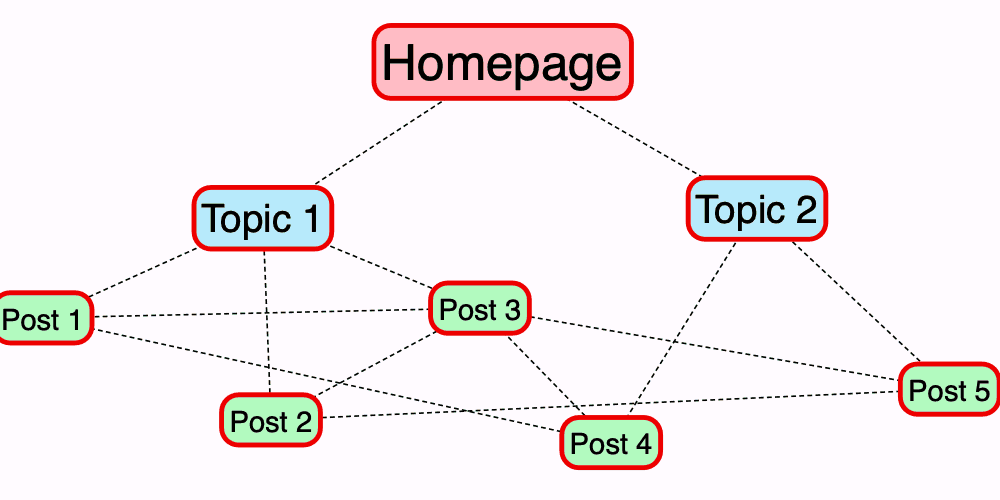Internal Linking for SEO

Internal Linking for SEO & How to Do it?
Before your content can rank on the likes of Google, you need links. Google will be able to find your pages and posts best when they are linked to and from somewhere on the Internet. You can also connect your content effectively through the use of internal links, which is important because Google will get an understanding of your site’s structure.
This means that they are going to be able to establish a hierarchy on your website, which enables you to give the most critical posts and pages greater link value than other pages that are not so valuable. This is why it is vital that you need to create an effective internal link building strategy. With that in mind, continue reading to find out everything you need to know.
Why does Google care about links?
Google uses links to discover what sort of content on your website is related and how valuable the content is. In terms of the latter, Google divides link value between all of the different links on a web page. Typically, the greatest link value will be on the homepage of a website, as it has a greater number of links. This link value is then going to be distributed between all of the links that are featured on the homepage.
The link value that is passed onto the next page is then going to be divided by the rest of the links on the page, and so on and so forth. This is why your newer posts will get more link value if they are linked from your homepage, rather than just being on a category page.
When it comes to relationships between content, Google will crawl sites by following links – both external and internal – through the use of a Google bot. The bot will render the page when it arrives on the homepage, following the first link. By following these links, Google will begin to figure out the relationships between the various pages, posts, and other content forms.
How to set up an internal link building strategy
Now that you know why links are so important to Google, let’s take a look at how you can build an internal link building strategy. Firstly, you need to get the structure right for your website. The best way to think about this is your website being a pyramid.
At the top, you have your homepage. You will then have categories or sections below this, and then you have individual pages and posts at the bottom. Once you have figured this out, you can start zooming in on your most important content.
This is your most complete and best content. It is the core of your company. It is the content that you want others to locate when they are looking for products or topics that you specialise in.
Now that you have got your structure figure out, you need to start adding contextual links. When a number of articles about a specific topic have been written, they should be linked with one and other. This is going to show Google, as well as your users, that these articles are related topically.
You can opt to add links at the end of the post or you can link them directly from sentences that are within your copy. Furthermore, you want it to be evident to Google which of these articles is the most complete article on the topic. In order to do this, you need to make sure that you feature a link that points to the cornerstone article in all of the related articles. And don’t forget that links back from the cornerstone article help as well.
Another way to build your internal SEO linking strategy is to add a related post section to your blog posts. They are a lot of modules and plugins that will add a full related post section to your posts. If you do decide to use this, you do need to be cautious.
Make sure that the plug-in is actually effectively drawing related posts. If you are unsure, it is always best to link posts manually. If you don’t, you could end up hurting your SEO strategy because unrelated articles will be linked to one and other.
In addition to the advice that has already been mentioned, you can add links to recent or popular posts as well. It is preferable to create these sections in the footer or sidebar of your site in order to have them appear on all posts and pages.
As link value passes to these recent and more popular posts from many different posts and pages, they really get a boost. Moreover, it will be easier for visitors to access these posts, which is going to result in more traffic.
You can use taxonomies to organise your website. This includes tags and categories. This will help Google and users to comprehend what your content is all about. If you have a blog, it can be helpful for internal links to be added to the taxonomies the post belongs to.
Last but not least, not only do you need to make sure that your website has contextual links but it should also have navigational links as well. You can make your cornerstone content more authoritative if you add links to it from the top navigation or the homepage. It is best to do this with the pages and the posts that are most vital to your company. This will give these pages or posts plenty of link value, which will make them stronger in Google’s eyes.
So there you have it: everything you need to know about SEO internal link building, including why it is important and how to go about it. If you want to make sure that your business succeeds in the competitive landscape of the web, you need to master internal link building.


